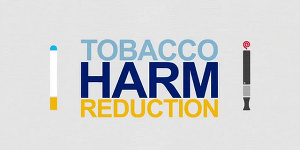Opinions of Monday, 12 September 2022
Columnist: Samuel Hanu
The science of tobacco harm reduction
In the 40 years since Professor Michael Russell, a South African scholar and specialist in the field of smoking behavior, pioneered the logic that smokers smoke for nicotine but are killed by tar, the assertion has largely remained incontrovertible despite the opposition to it in some quarters. This logic has served as a pivot for the concept of tobacco harm reduction (THR) and the arguments in favor of it.
Over time, the logic has spawned various innovations in tobacco consumption, ranging from vaping products to smokeless tobacco, which removes the combustible element and therefore the health risks of tobacco consumption.
A review by Public Health England on e-cigarettes in January 2018 concluded that: “Based on current knowledge, stating that vaping is at least 95% less harmful than smoking remains a good way to communicate the large difference in relative risk unambiguously so that more smokers are encouraged to make the switch from smoking to vaping”.
Similarly, a framework of scientific tests recently developed to assess the reduced-risk potential of vapor products, especially when compared with conventional cigarettes, shows that vapor has a much reduced or no biological impact on human cells in the laboratory, compared with conventional cigarette smoke, depending on the test used.
Notably, the last couple of decades have seen a proliferation of tobacco products that have the potential to serve as a means of reducing the health impact of tobacco consumption. These products have come to be known as reduced-risk products (RRPs).
The concept of harm reduction is not new or peculiar to tobacco consumption. Its application is found in several policy areas such as alcohol control, illicit drugs, automobile safety, and sex education for children, among others.
In the case of THR, the underlying concept is that in addition to interventions aimed at preventing and promoting smoking cessation, it is about providing reduced risks products (RRPs) for those who cannot quit. While some experts believe that RRPs will reduce the health impact of tobacco consumption, for those who completely switch to them; others caution that RRPs pose the risk of getting non-smokers to use and become addicted to nicotine and tobacco products.
Nevertheless, science continues to prove the efficacy of THR towards the objective of reducing harm inherent in combustible tobacco products.
In recent years, there have been policy and regulatory shifts in several markets globally, as science continues to point to the benefits of RRPs as a substitute for smoking. However, even as policy actions and the political will of THR have varied from one country to another, some progressive nations have opted to implement science-based policies for THR.
For example, the United Kingdom has in place a balanced regulatory regime that encourages adult smokers to migrate to RRPs while also dissuading youth uptake.
Instructively, its position is science-based and also backed by multi-stakeholder groups and particularly public health agencies such as Public Health England (PHE) and the Royal College of Physicians that have, in recent years, made interesting findings on the safety of RRPs and their effectiveness in tobacco cessation.
There are also success stories in countries like Sweden, Norway, Iceland, Japan, and Korea that have embraced RRPs and made significant progress in bringing down their smoking rates by encouraging smokers to switch to these products.
For most African countries, though legislation on conventional tobacco exists there is a near absence or non-existence of legislation on RRPs. Regulatory authorities still see prevention of tobacco consumption as a one size fits all approach to tobacco harm reduction with little or no interest shown in the efficacy of RRPS.
In Ghana, for example, the Tobacco Control Regulations, 2016 (L.I. 2247), which is the country’s legislative document on tobacco does not adequately cater to these reduced-risk products. Evidence shows that countries that are successfully reducing smoking rates with THR have also established separate legislation or policies to guide the use, categorization, and sale of RRPs.
For THR to work, there is a need for effective and balanced regulations which recognize the reduced risk benefits that these alternative products can provide for adult consumers who have made an informed choice to smoke.
Another challenge for Ghana as well as many other developing economies is the level of awareness of RRPs among consumers. In the United States, for example, a study by Brose et al. suggests that the daily vaping of e-cigarettes bolsters the user’s effort to stop smoking or helps reduce the number of cigarettes smoked. The same cannot be said about Nigeria where combustible cigarette consumption remains popular.
It is gratifying that more and more governments and regulators, all over the world, are increasingly becoming aware of the effectiveness of safer alternatives, not only in reducing the health impact of tobacco consumption but also as an effective strategy for smoking cessation.
Therefore, it is hoped that the Ghanaian Government will embrace tobacco harm reduction as a public health strategy. RRPs, according to experts, present a more realistic, pragmatic, consumer-oriented, and science-based approach to accelerate tobacco control and smoking cessation.











